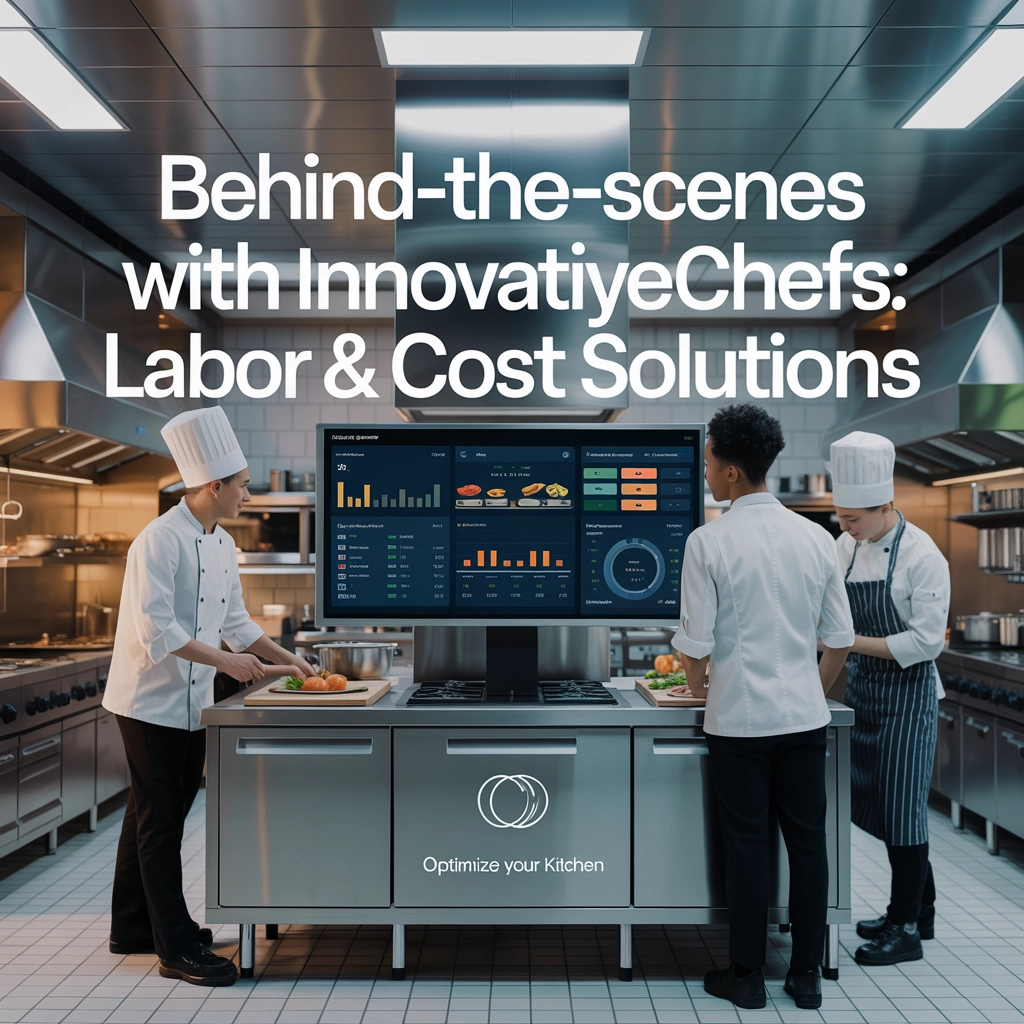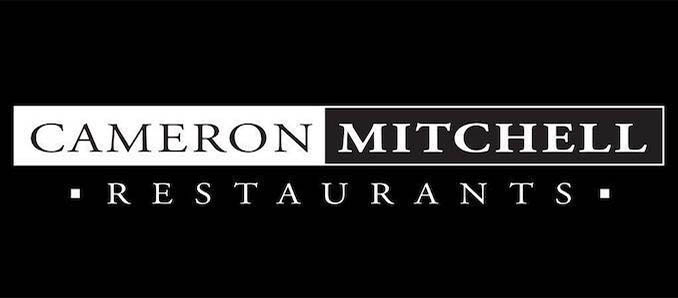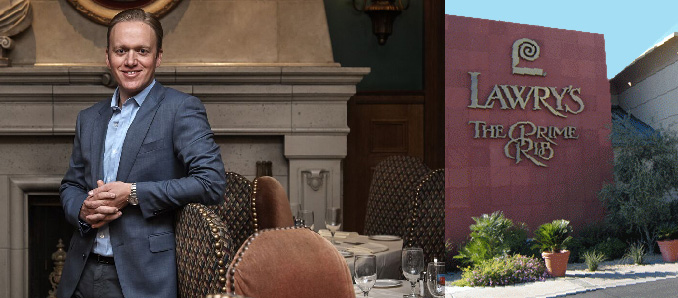The New Restaurant Reality
The restaurant industry has reached a critical inflection point. With labor costs rising 15-20% in the past three years and food inflation hovering at 8-12% annually, culinary professionals face unprecedented operational pressures. Yet amidst these challenges, a new generation of innovative chefs is reimagining kitchen operations from the ground up—creating sustainable models that maintain quality while addressing the industry's most pressing pain points.
"The days of just being a great cook are long gone," says Chef Marcus Samuelsson of Red Rooster Harlem. "Today's successful chef is part technologist, part data analyst, and part efficiency expert. We have to be—our survival depends on it."
This behind-the-scenes exploration reveals how forward-thinking culinary leaders are transforming labor and cost management with innovative approaches that preserve quality while protecting profitability.
Labor Innovation: Beyond Traditional Staffing Models
Cross-Functional Kitchen Crews
The traditional brigade system—with rigid stations and specialized roles—is giving way to more flexible approaches. At Michelin-starred Atomix in New York, Chef Junghyun Park has implemented what he calls "micro-brigades"—small, cross-trained teams that can pivot between stations as service demands.
"We've reimagined our entire kitchen workflow," Park explains. "Each team member learns multiple stations, which gives us incredible flexibility when someone calls out sick or during slower periods when we need to reduce staffing."
This cross-training approach doesn't just solve scheduling headaches—it creates more engaged employees with broader skill sets and clearer advancement paths. Restaurants implementing similar models report 22% higher employee retention and 15% lower overall labor costs.
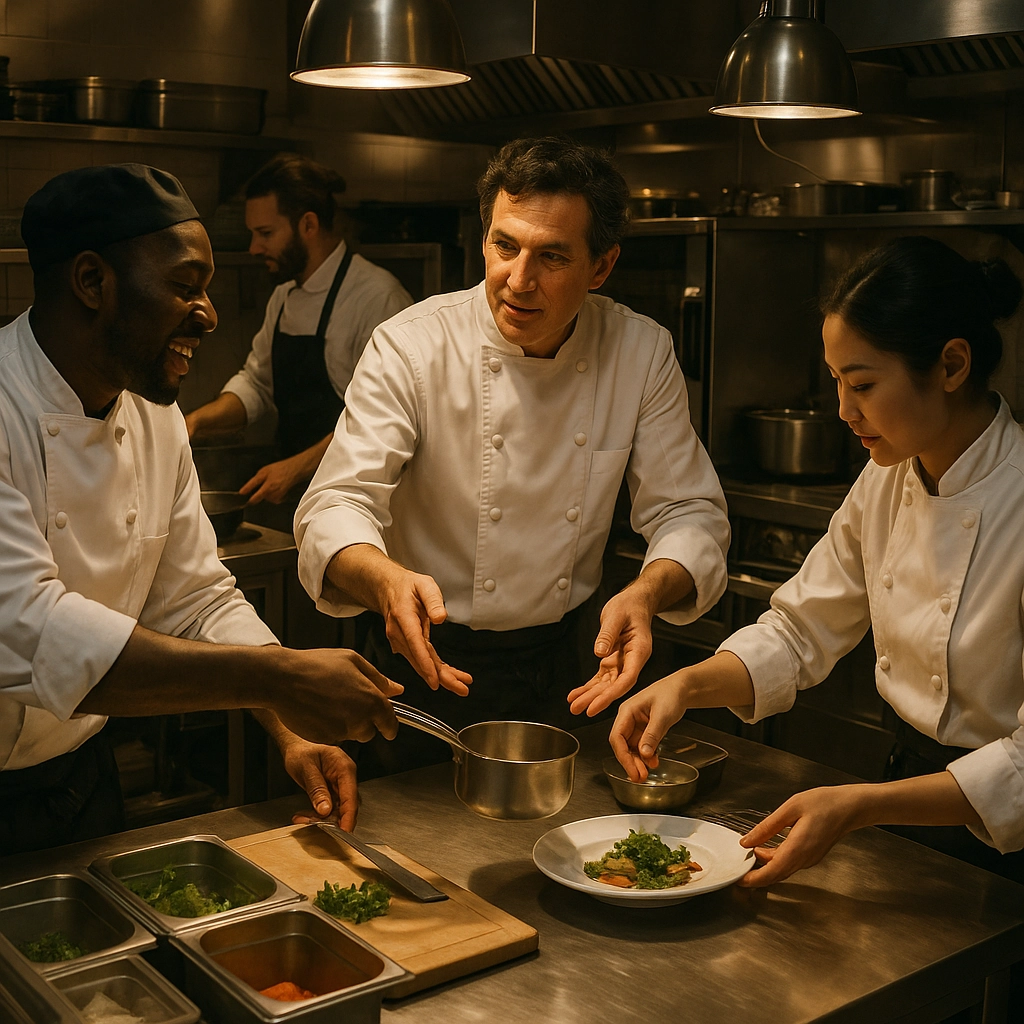
Technology-Enhanced Scheduling
Smart scheduling represents one of the most significant labor innovations in modern kitchens. Platforms like 7shifts, HotSchedules, and Workforce.com are transforming how restaurants allocate their most expensive resource: staff time.
Chef José Andrés' ThinkFoodGroup implemented AI-powered scheduling across their restaurant portfolio, resulting in a 12% reduction in labor costs while maintaining service standards. The system analyzes historical sales data, weather patterns, local events, and even social media sentiment to predict customer volume and staffing needs with remarkable accuracy.
"The technology doesn't replace human judgment—it enhances it," says Kimberly Grant, former CEO of ThinkFoodGroup. "Our managers still make the final decisions, but they're now making them with vastly better information."
Advanced time-tracking systems with biometric verification have also eliminated time theft issues that silently drain restaurant profitability. When integrated with POS systems, these platforms provide real-time labor cost percentages that allow managers to make immediate adjustments during service.
Cost Control Reimagined
Zero-Waste Kitchens Leading the Way
The most innovative cost-control measures extend far beyond simple penny-pinching. Leading the charge are zero-waste kitchens that transform traditional cost centers into profit opportunities.
Chef Douglas McMaster of Silo in London has eliminated traditional trash cans entirely from his kitchen, forcing creative solutions for every potential waste item. Vegetable trimmings become ferments, meat scraps transform into charcuterie, and even cardboard packaging is composted on-site.
"When we removed the safety net of the trash can, we discovered dozens of untapped resources hiding in plain sight," McMaster notes. "What was previously waste—costing us disposal fees—has become a source of unique flavors and additional revenue."
This approach doesn't just reduce food costs (typically by 4-8%) but creates signature items that differentiate restaurants in crowded markets. At Amass in Copenhagen, Chef Matt Orlando transforms potato peels into delicious snacks that have become among the restaurant's most requested items.
Inventory Management Revolution
The clipboard and spreadsheet have given way to sophisticated inventory management systems that provide unprecedented visibility into restaurant costs.
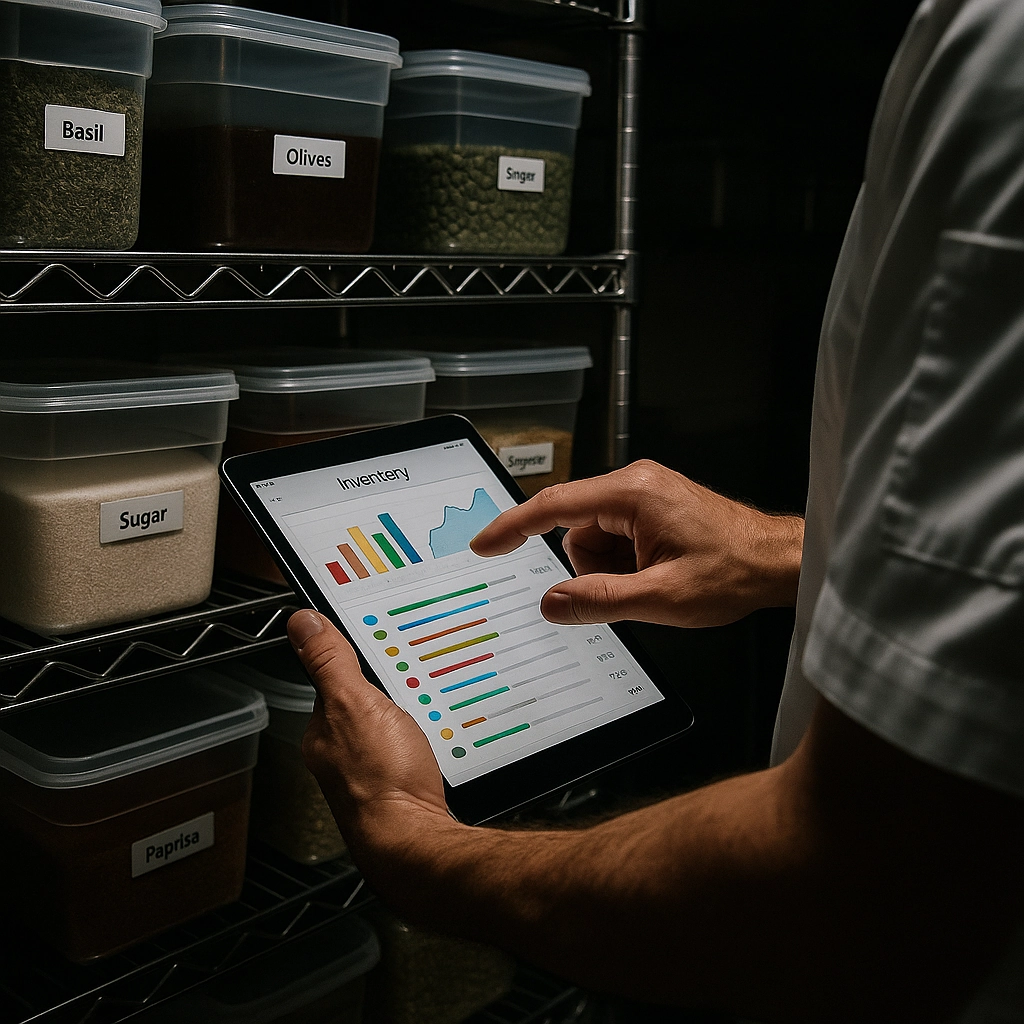
"Most restaurants think they know their food costs, but they're actually operating with limited visibility," says Chef Tom Colicchio, whose restaurant group implemented real-time inventory tracking across all locations. "When we installed true perpetual inventory systems, we discovered our actual costs were 3-5% higher than our theoretical calculations suggested."
These systems create automated ordering thresholds based on historical usage, reducing both emergency orders (typically 15-30% more expensive) and excess inventory that leads to waste. When integrated with menu engineering software, they provide plate-cost calculations that factor in real-time market fluctuations.
"We can now see exactly how price changes impact our profitability on each dish," explains Chef Kwame Onwuachi of Tatiana in New York. "When seafood prices spike, the system automatically flags which dishes need recipe adjustments or price changes to maintain margins."
Operational Excellence Through Data
The Kitchen Dashboard Revolution
Perhaps the most significant behind-the-scenes innovation is the rise of integrated kitchen dashboards that provide real-time operational intelligence. These systems pull data from POS, inventory, scheduling, and even equipment sensors to create comprehensive operational pictures.
At José Andrés' minibar, kitchen displays show not just orders but also real-time food and labor cost percentages as service progresses. When costs exceed targets, managers receive immediate alerts with specific recommendations.
"Before implementing our dashboard, we were essentially flying blind during service," explains ThinkFoodGroup's Director of Operations, Miguel Lancha. "Now we can see exactly how each decision impacts our bottom line in real-time."
These systems also monitor equipment performance, identifying energy usage patterns and maintenance needs before costly failures occur. Smart thermostats and automated lighting save 8-12% on utility costs, while predictive maintenance on refrigeration equipment reduces expensive emergency repairs by up to 30%.
Menu Engineering for Maximum Yield
Modern menu engineering has evolved far beyond the traditional four-box matrix. Today's innovative chefs use sophisticated data analysis to understand precisely how each menu item performs across multiple dimensions.
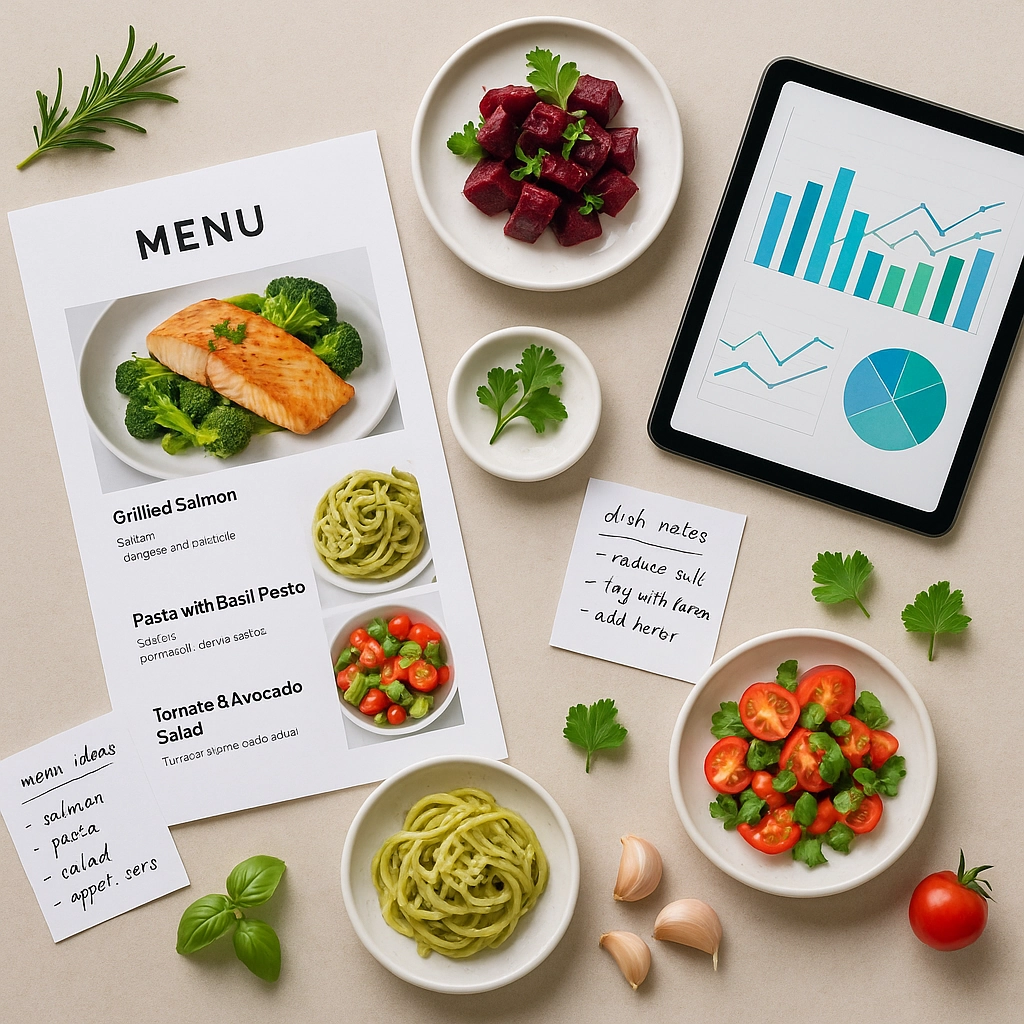
"We analyze not just profitability and popularity, but also kitchen complexity, preparation time, and even social media engagement," explains Chef Dominique Crenn of Atelier Crenn. "This multidimensional understanding allows us to craft menus that optimize both the guest experience and our operational realities."
This approach often reveals counterintuitive insights. Items that appear profitable on paper may actually strain kitchen resources during peak periods, while seemingly less profitable dishes might utilize underemployed stations or ingredients that would otherwise go to waste.
Chef Sean Brock's Audrey in Nashville takes this approach further by analyzing ingredient utilization across the entire menu. Their system identifies opportunities to use the same ingredients in multiple dishes, reducing both food costs and prep complexity.
The Human Element Remains Essential
Despite these technological advances, successful implementation ultimately depends on human factors. Restaurants seeing the greatest benefits combine technological solutions with robust staff training and clear communication.
"The technology is just a tool—it's how people use it that matters," says Chef Nina Compton of Compère Lapin. "We spent as much time training our team on the 'why' behind these systems as we did on the 'how.'"
This human-centered approach extends to customer interactions as well. Innovative restaurants use technology to reduce back-of-house labor while strategically deploying staff where they create the most value—in guest-facing roles that build relationships and drive repeat business.
"Our technology handles the routine tasks so our people can focus on creating memorable moments," explains Will Guidara, former co-owner of Eleven Madison Park. "That's the balance that defines today's most successful restaurants."
Conclusion: The New Culinary Entrepreneur
The most striking revelation from behind the scenes of today's innovative kitchens is the evolution of the chef role itself. Today's successful culinary leaders combine creative talent with business acumen and technological fluency.
As labor pressures and cost challenges continue, this new breed of culinary entrepreneur will likely define the restaurant industry's future. Their ability to balance artistic vision with operational excellence offers a sustainable path forward in an industry notorious for thin margins and operational challenges.
For those willing to embrace these innovations, the opportunities are substantial. Restaurants implementing comprehensive labor and cost solutions typically see 5-8% improvements in overall profitability—often the difference between survival and closure in today's challenging market.
The future belongs to those who can marry culinary excellence with operational innovation—creating sustainable businesses that thrive regardless of economic headwinds.
Written by Michael Politz, Author of Guide to Restaurant Success: The Proven Process for Starting Any Restaurant Business From Scratch to Success (ISBN: 978-1-119-66896-1), Founder of Food & Beverage Magazine, the leading online magazine and resource in the industry. Designer of the Bluetooth logo and recognized in Entrepreneur Magazine's "Top 40 Under 40" for founding American Wholesale Floral. Politz is also the founder of the Proof Awards and the CPG Awards and a partner in numerous consumer brands across the food and beverage sector.



